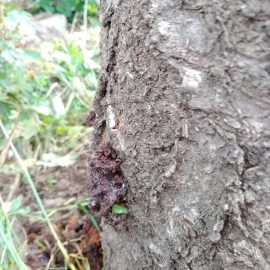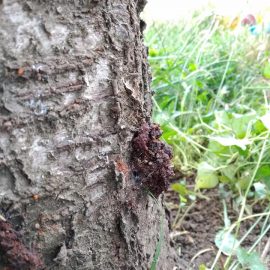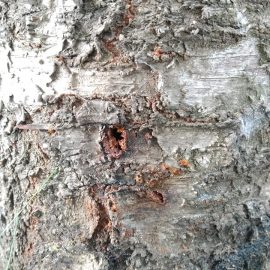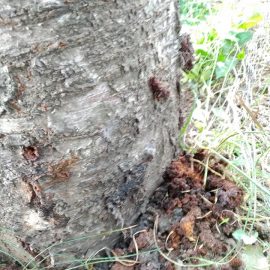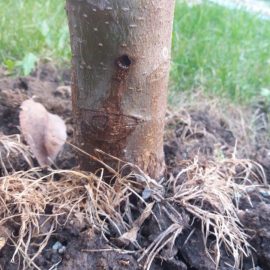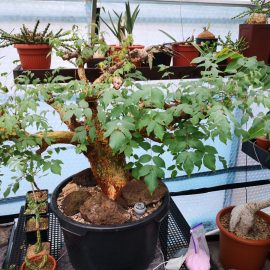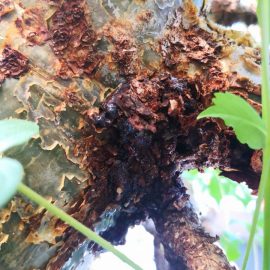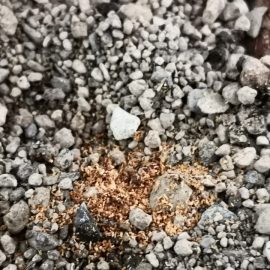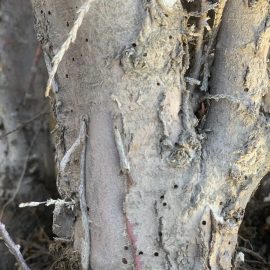The leopard moth (Zeuzera pyrina) – pest management
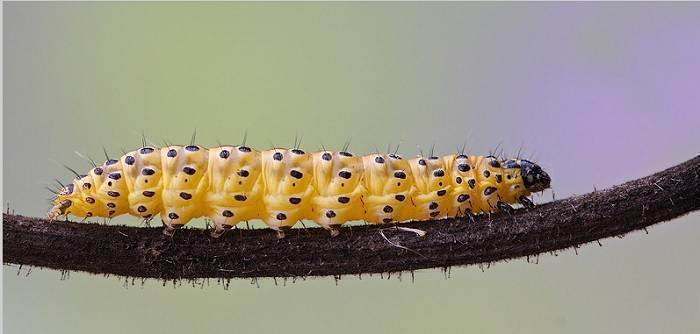
Prevalence. The leopard moth is a species reported in Europe, Northern Africa, and Asia on broad-leaved trees, but also in orchards of fruit trees. It can be found both in the plain area and in the mountain area.
Description. Butterflies are around 25 mm long, their body is covered with white hairs, on the head have 6 blue spots arranged in two longitudinal lines, and the abdomen has blue transverse stripes. The eggs are ovoid, about 1 mm long, brown-yellow.
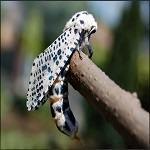
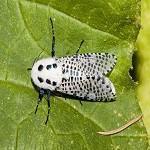
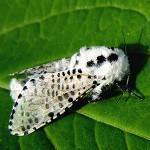
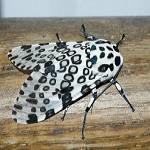
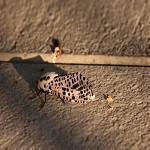
The young larva is pink, then becomes yellow-spotted. It can be up to 60 mm long, and the head and chest are black.
Biology and ecology. It usually has a cycle of 2 years, and the larva overwinters twice. Adults fly from June to early August, live 8-10 days, and mate during the night. The female lays up to 1000 eggs, in the cracks of the bark, near the buds, on the bark of the young tendrils, on the petiole of the leaves. Incubation lasts between 1-3 weeks. The young larvae first attack the organs of the young trees. The newborn larvae first weave a silky nest, in which they remain clustered at first, then drill the galleries in the buds, in the petiole of the leaves, and around the young shoots.
After the second overwintering period, the caterpillars drill galleries in the thicker branches, then the stem, which reaches 50-60 cm in length. The larvae remove the sawdust and droppings from the galleries, which are orange or reddish in color. The caterpillars hibernate inside closed galleries, then resume their activity in the spring. In the spring of the third year, the larvae feed for a few weeks, after which drill bear a hole, where they form a silky cocoon, which turns into a pupa, from which the adults appear.
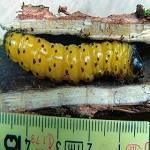
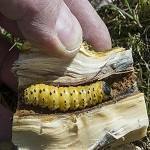
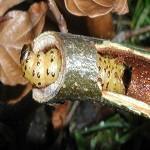
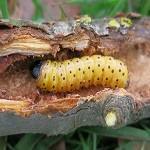
Attacked plants and damages. The pest attacks various forest and ornamental species, as well as fruit trees in orchards. Early caterpillars gnaw the petiole of young leaves and shoots, and mature larvae drill wooden galleries in the thinner branches from the central area. From these galleries, sawdust, excrement, and a viscous liquid are ejected to the surface of the attacked branch, and sawdust accumulates near the hole. The attacked trees are weakened, and the pierced branches break.
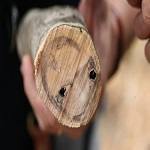
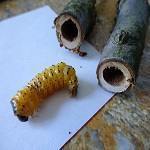
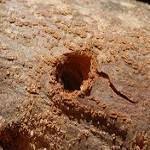
Control. If the attack is discovered in time, the affected plant has to be cut and burned. If the attack is very advanced, no chemical control is recommended.
In order to control the leopard moth, treatments can be carried out with specific insecticides during the flight period.
Recommended products
-
You can find products on a different store
Change Store -
You can find products on a different store
Change Store -
You can find products on a different store
Change Store -
You can find products on a different store
Change Store -
You can find products on a different store
Change Store -
You can find products on a different store
Change Store -
You can find products on a different store
Change Store -
You can find products on a different store
Change Store -
You can find products on a different store
Change Store -
You can find products on a different store
Change Store -
You can find products on a different store
Change Store -
You can find products on a different store
Change Store -
You can find products on a different store
Change Store -
You can find products on a different store
Change Store -
You can find products on a different store
Change Store -
You can find products on a different store
Change Store -
You can find products on a different store
Change Store -
You can find products on a different store
Change Store -
You can find products on a different store
Change Store -
You can find products on a different store
Change Store -
You can find products on a different store
Change Store -
You can find products on a different store
Change Store -
You can find products on a different store
Change Store -
You can find products on a different store
Change Store














































































































































































































































































































































































































































